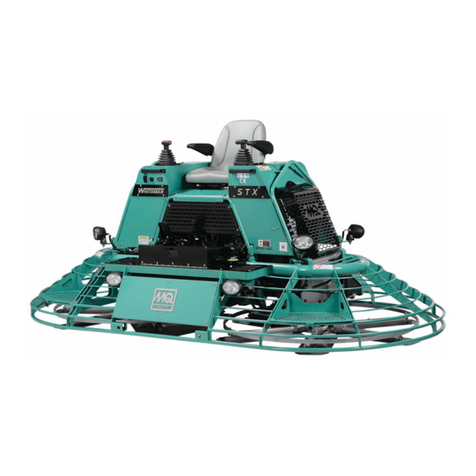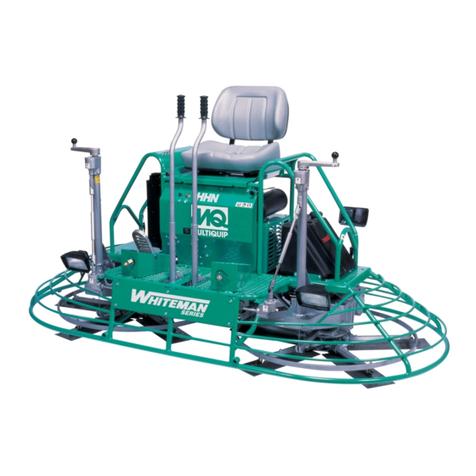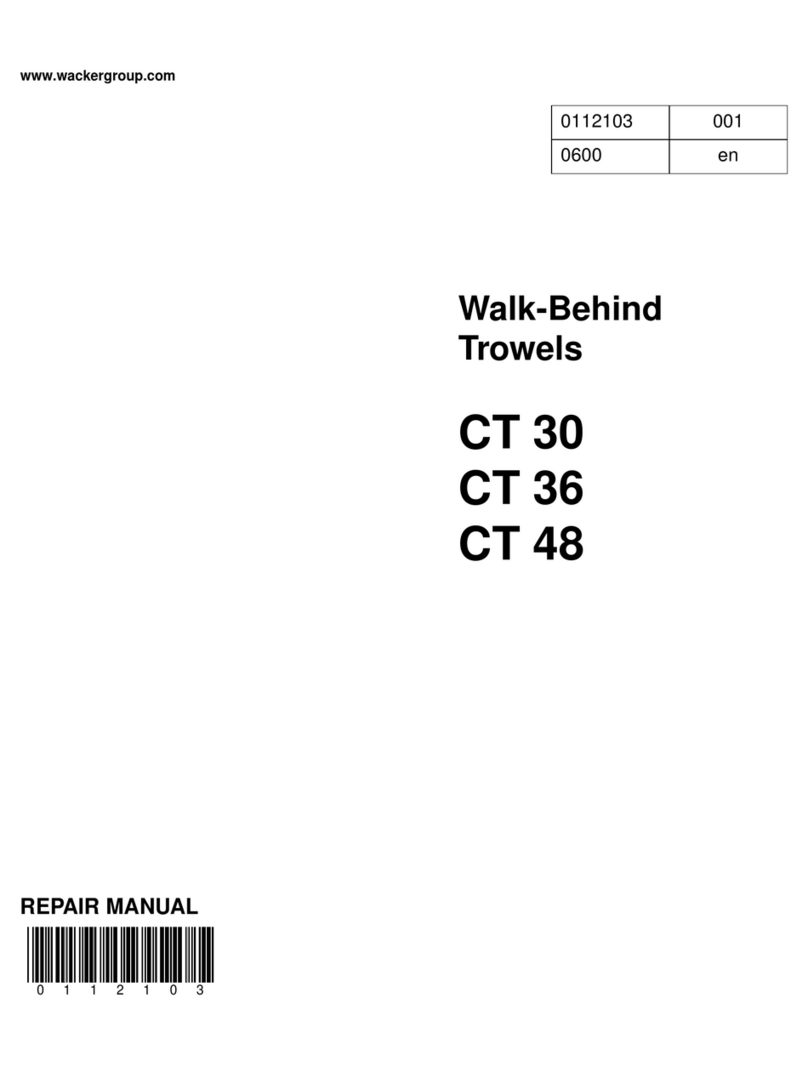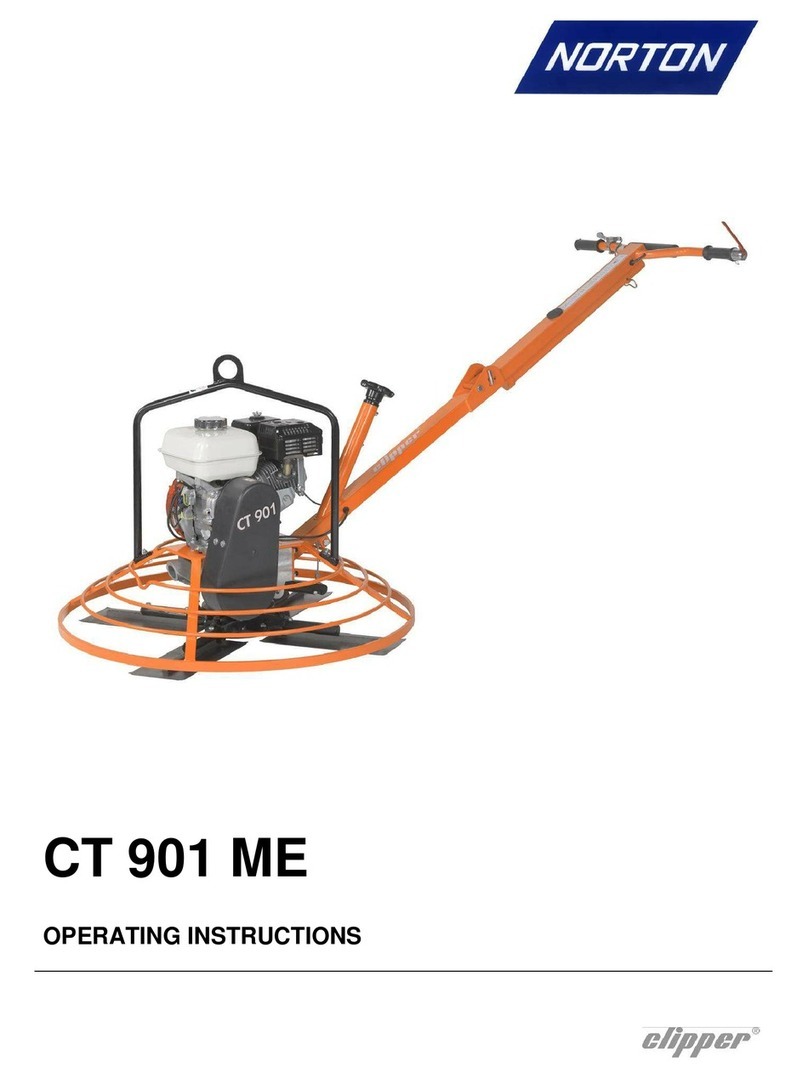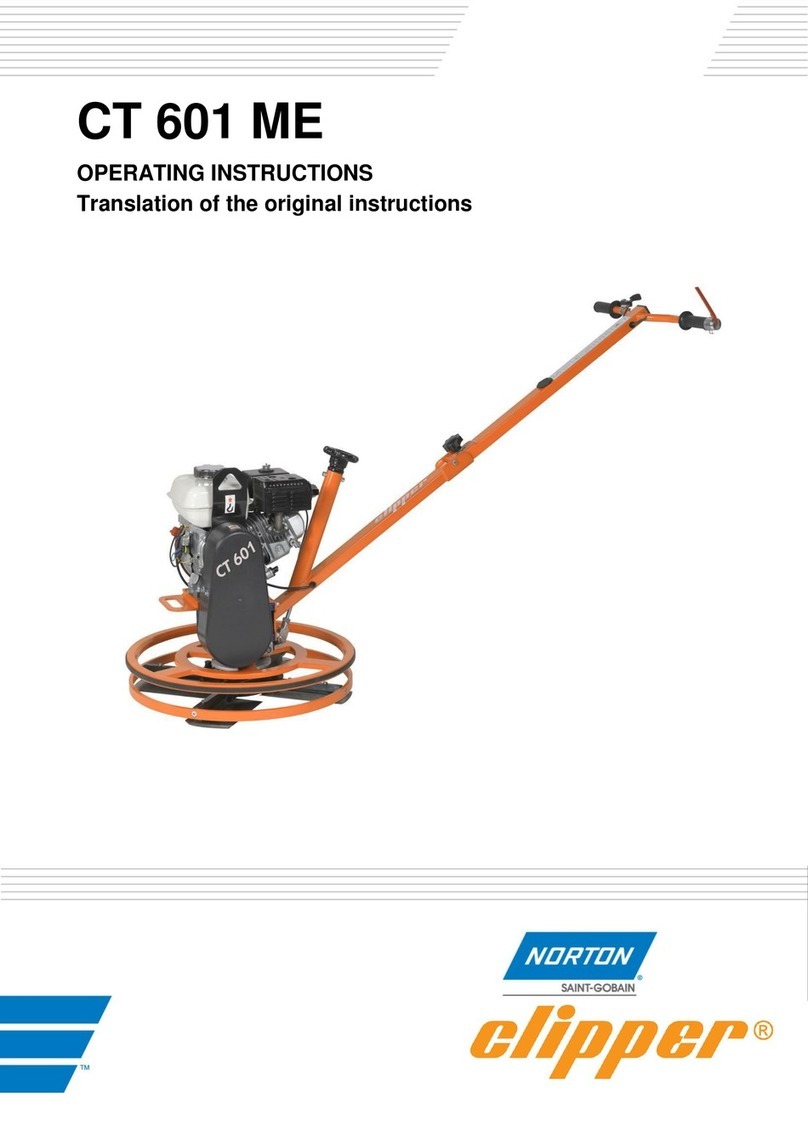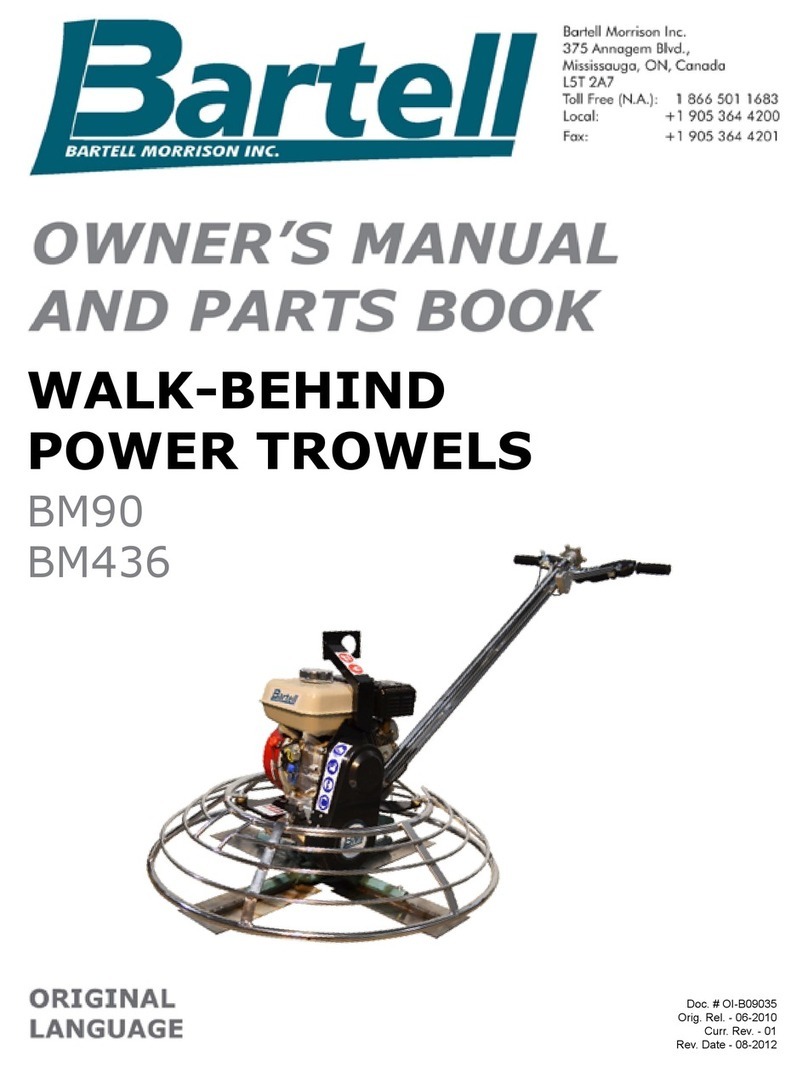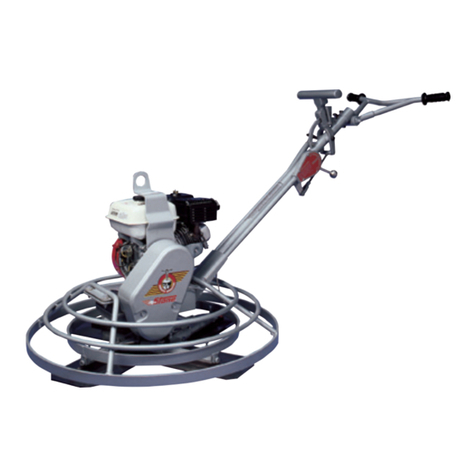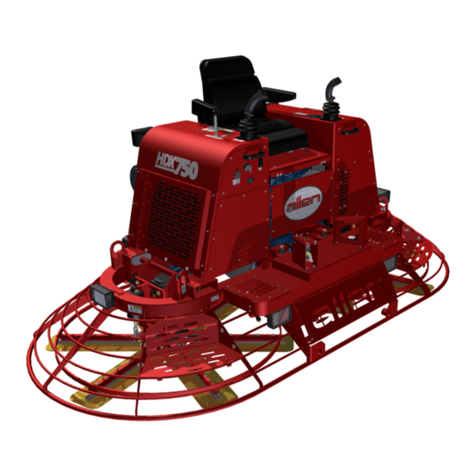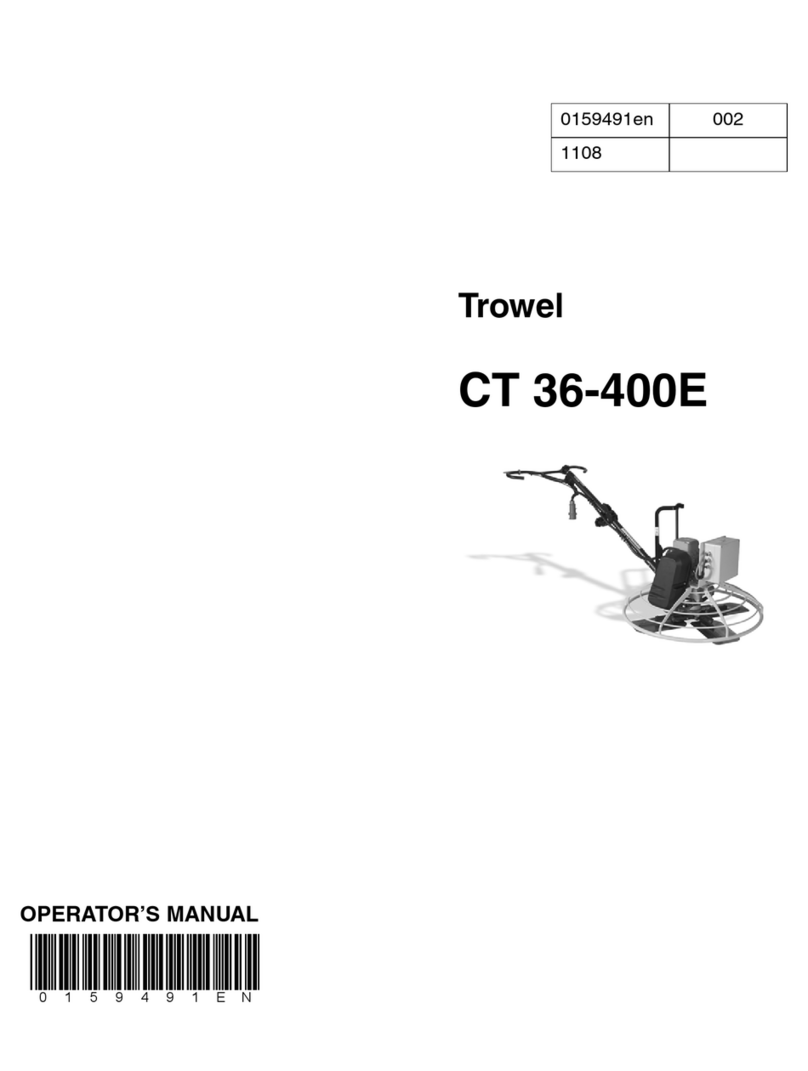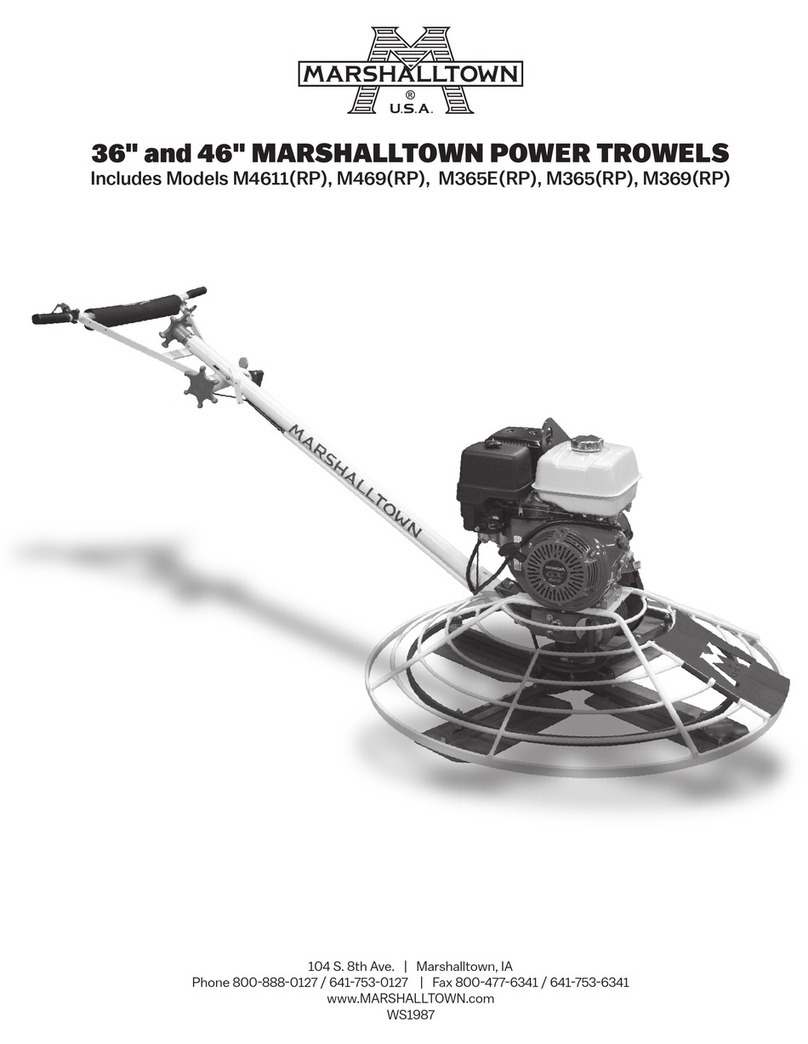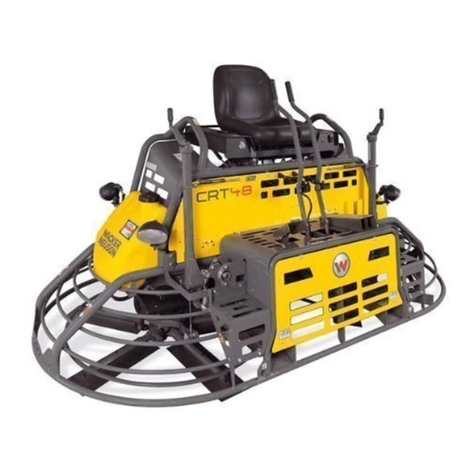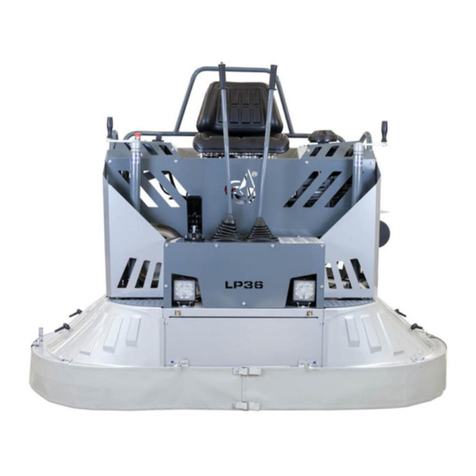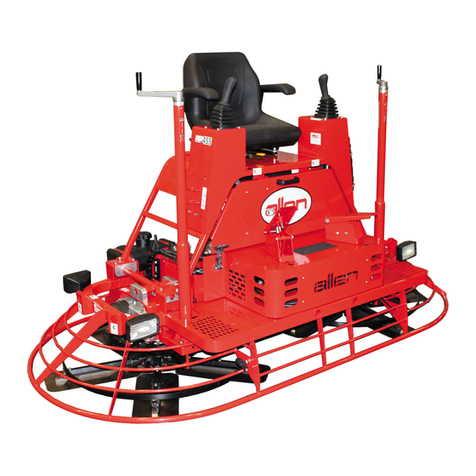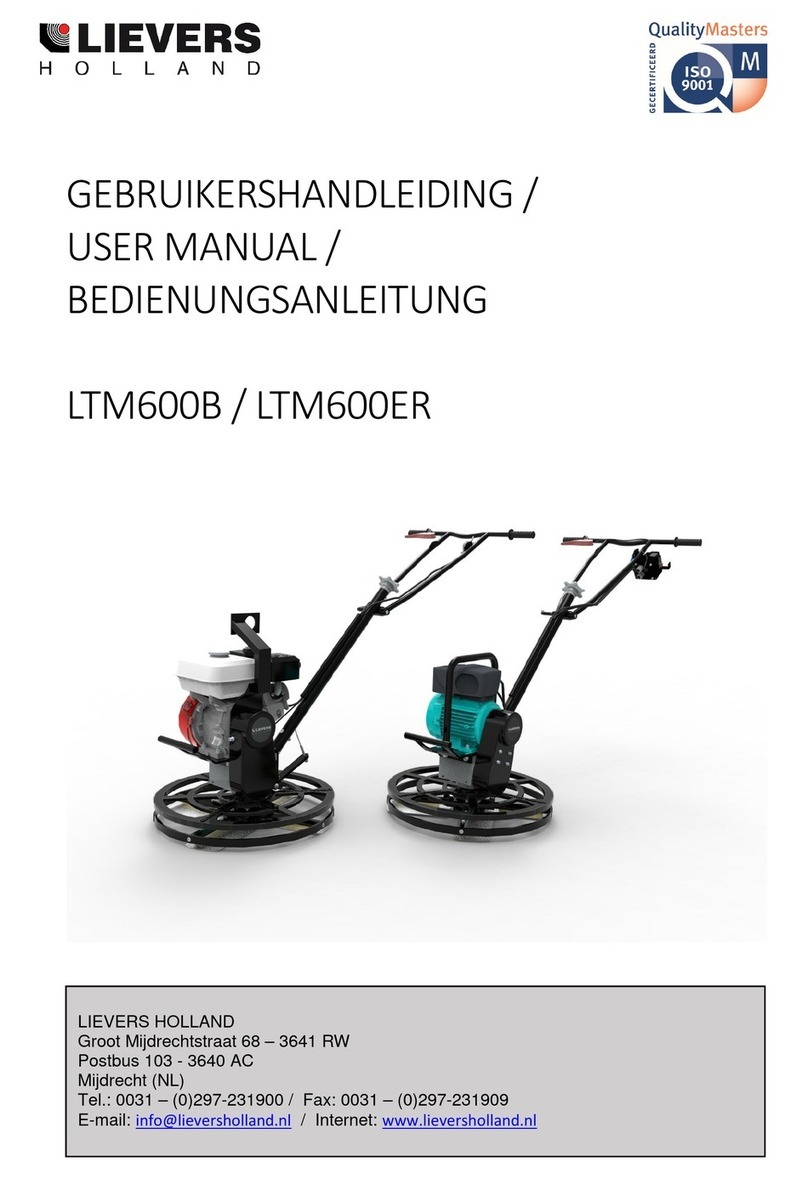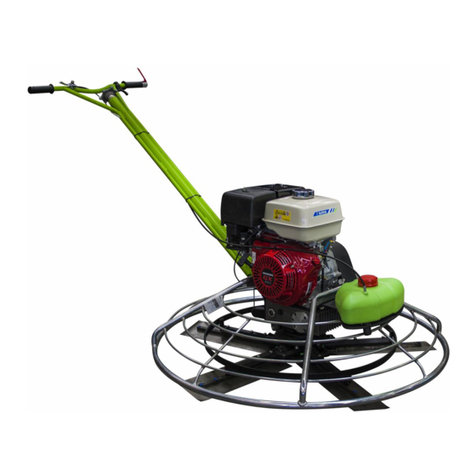
7
1.2 Machine plate
Important data can be found on the following plate located on the machine:
1.3 Safety instructions for particular operating phases
Before commencing work
Before commencing work, make yourself familiar with the working environment at the place of
use. The working environment includes: obstacles in the area of work and manoeuvre, the
firmness of the floor, necessary protection at the site relating to public thoroughfares and the
availability of help in the event of accidents.
Check for correct mounting of the tool regularly.
Immediately remove damaged or badly worn tools, as they endanger the operator whilst
rotating.
Always cut with the safety guard ring in position.
Only fit NORTON blades or plates to the machine! The use of other tools can damage the
machine!
Attention is drawn to the use of BS2092 safety goggles in conformity with specified Processes
No.8 of the Protection of Eyes Regulation 1974, Regulation 2(2) Part 1.
Petrol powered machines:
Always use the fuel advised.
In confined areas, exhaust gases should be evacuated and the job site properly aerated.
Petrol machines, which by their nature emit toxic exhaust gases, must not be used in places
prohibited by the Health at Work etc. Act 1974 or which are prohibited by Factory Inspectors or
Safety Officers.
Fuel is flammable. Before filling the tank, shut down the engine, extinguish all open flames and
do not smoke. Take care that no petrol is spilled on any motor part. Always wipe up spilled fuel.
2 Machine description
Any modification, which could lead to a change in the original characteristics of the machine, may
be done only by Saint-Gobain Abrasives who shall confirm that the machine is still in conformity
with the safety regulations.
2.1 Short description
The Clipper Mechanical Trowel MTA36 is designed for durability and high performance for onsite
finishing operations on wet concrete floors. As with all other NORTON products, the operator will
immediately appreciate the attention given to detail and quality of materials used in construction.

